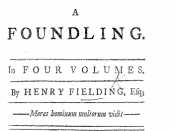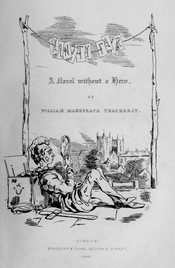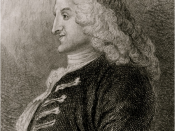The English novel was first introduced in the 18th century. Henry Fielding was one of the fathers of the genre, who created consciousness among the readers and potential writers. He saw himself as an innovator in the long tradition of poets and dramatists of the past. In 1749 Fielding published The History of Tom Jones - one of the first English works of prose that was soon recognized as a masterpiece. Only a century afterwards, William Thackeray, the author of Vanity Fair, chose Fielding for his literary model. Thackeray is also known to have protested that Victorian novelists like him were not permitted to write with the openness that Henry Fielding had enjoyed in the 18th century. The Victorian novelist soon began to produce his own works in which it is conspicuous how extensively Fielding's example has contributed to his literary output and subsequently the formation of his own early manner (Johnson 1961; 100).
Thus, after having read the two literary works picturing England of the 18th and the 19th century, the reader is able to easily notice certain similarities as well as differences between them.
In literature, the ideal interpretation seems to be an interpretation that is able to account for every part of a piece of literature in its relation to every other part and to the whole. Unity is so usual a requirement in criticism of the novel that it can easily be considered a factor in comparing The History of Tom Jones and Vanity Fair. Fielding organized his work into separate books. "The eighteen books of Tom Jones fall into three groups of six each, centred respectively around the home, the road, and in London" (Sikorska 2002; 189). When reading the work, its rapid pace and large number of events may mislead the reader into...


